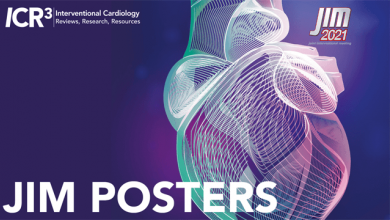Search results
José PS Henriques
Research Area(s) / Expertise:
Job title: Director of the Catheterisation Laboratory
Author
Author(s):
Emily Mae L Yap
,
Alexander A Tuazon
Added:
2 years ago
Cardioprotected Percutaneous Coronary Intervention - A Case Study in a Stable Angina Patient
Author(s):
Tim P van de Hoef
,
Werner Mohl
,
Ahmed A Khattab
,
et al
Added:
3 years ago
Article
Author(s):
Abhijeet Basoor
,
Gagan Randhawa
,
John F Cotant
,
et al
Added:
3 years ago
In the US, over the past 30 years, advances in cardiovascular care have resulted in a dramatic decline in mortality and morbidity associated with ST elevation myocardial infarction (STEMI) and non-STEMI.1,2 The overall incidence of coronary heart disease (CHD) has decreased over the last four decades.3
There are various reports about disparities in healthcare and the higher mortality among…
View more
Foreword
Author(s):
Simon Kennon
Added:
3 years ago
Article
Author(s):
Michael Tsang
,
Sanjit Jolly
Added:
3 years ago
Many advances have been made in the management of ST elevation myocardial infarction (STEMI) over the past three decades.1 This is owed to insight into role that thrombus has in the obstruction of the infarct-related artery (IRA) and the subsequent cascade of the myocardial ischaemia, cell oedema and myocardial necrosis. The institution of reperfusion therapy has revolutionised the care of…
View more
Foreword: ICR 7.1
Author(s):
Carlos E Ruiz
Added:
3 years ago
Article
Author(s):
Henning Rud Andersen
,
Christian Juhl Terkelsen
Added:
3 years ago
In patients with ST-elevation myocardial infarction (STEMI), reperfusion can either be in the form of fibrinolysis or primary percutaneous coronary intervention (PCI). In recent years, several trials have proven the superiority of primary PCI compared with fibrinolysis,1-5 and it is estimated that primary PCI saves an extra 26 lives per 1,000 treated, when compared with fibrinolysis (Table 1).3…
View more
Author(s):
Dan Burkhoff
,
Sandeep Nathan
,
Jerry D Estep
,
et al
Added:
2 years ago
Despite advances in reperfusion with primary stenting, progress in STEMI outcomes has stalled over the past 20 years. With 90% of coronary blood flow in the capillaries, the answer might be in the microvasculature. TherOx SSO2 Therapy is the first FDA approved therapy shown to significantly reduce the infarct size in STEMI patients.
During this series of webinars on Supersaturated Oxygen …
View more















